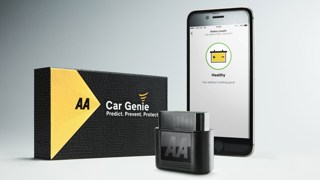The AA is launching two services that aim to reduce fleet downtime and ensure car and van drivers stay mobile at all times.
The first is a B2B replacement vehicle initiative working with a large carmaker (as yet unnamed) which, says The AA, will offer a better experience than the current process.
“Getting a replacement vehicle can be a lengthy and dissatisfying experience for many company drivers,” says Jennie Hill, director, business services at The AA.
“If a patrol identifies that the vehicle cannot be repaired at the roadside, we can get you quickly into a like-for-like vehicle within 30-40 minutes of the diagnosis.”
The patrol can see vehicle availability and repair capacity of dealerships within the locality on their handheld device. They can scan the driver licence and underwrite the insurance within minutes, before taking the driver to the dealership where the replacement vehicle will be ready for them to drive away.
“We then manage the vehicle off-road process and do the downtime management with the dealer,” says Hill, who adds that the system build involved bringing together around 14 suppliers.
“Now, the process is disjointed; this will integrate it and make it visible for the customer, the patrol and the dealer.”
While the vehicle replacement service helps to ensure drivers remain mobile with minimum delay, The AA also believes it can prevent up to a third of breakdowns even reaching this stage with a new predictive diagnostics platform.
Preventative maintenance systems are not new; other companies already offer their own real-time diagnostics solutions, including leasing companies and telematics suppliers.
Where The AA believes its product differs, though, is in the extensive trials and amount of data analysed, which has resulted in a greater level of intelligence into the likelihood of a fault code leading to a breakdown.
This is key, according to The AA. It has undergone almost two-and-a-half years of testing with 10,500 vehicles to work out what action to take when data is received, ranging from no action to instant contact with the driver.
The programme also sought to identify how drivers would respond to an email, text or phone call from The AA saying ‘your vehicle has a problem, can we visit?’.
“Trust is key and people do trust us,” said Hill. “This isn’t the issue; the issue is whether the customer will actually do something about it (once informed).”
The trial identified that fault codes are issued regularly and, in isolation, are not necessarily a reason to contact the customer. The trick is to understand code combinations and the probability of them leading to a failure.
During the trial, and in full knowledge of the drivers involved, The AA monitored fault code activity, but did nothing. This enabled it to identify which combinations resulted in a breakdown and how long it took before the breakdown occurred. In some cases, fault codes simply went away of their own accord.
“The trial was about understanding how we use the data and when is the right time to contact the customer,” said Hill. “What we have from a data point of view is unique. We believe we can predict and prevent up to a third of breakdowns.”
The AA device, called Car Genie, was launched to private drivers last year but the business version (Car Genie For Business) will not be available until the end of this year.
It can be self-installed, plugging into a car’s on-board diagnostics port.
This enables it to read the diagnostics system in real-time and broadcast the information to the Car Genie app, which is available on both iOS and Android.
The interface has been designed for fleets, incorporating management information to give them visibility and control over their vehicles. It also acts as a conventional telematics system, providing information on driving behaviour.
Car Genie has been made possible by the onset of vehicle connectivity as it opens up the vehicle diagnostics to third party analysis. The next step depends on resolving the thorny issue of who owns the customer and vehicle data.
The AA believes the fleet and the individual should be in control. In this situation, it will be able to message the customer to say their car is likely to break down within the next couple of days, it will supply a replacement, take the car away to fix and return it later that day.
“We will do this in conjunction with the industry – we aren’t a fleet management company or a car company; we will work with leasing companies, rental companies and car companies,” says Hill. “The service can be white-labelled or AA branded – it doesn’t matter.
“What’s important is we are preventing them from breaking down at the side of the road – we pre-empt it and fix the car at their convenience.”






















Login to comment
Comments
No comments have been made yet.